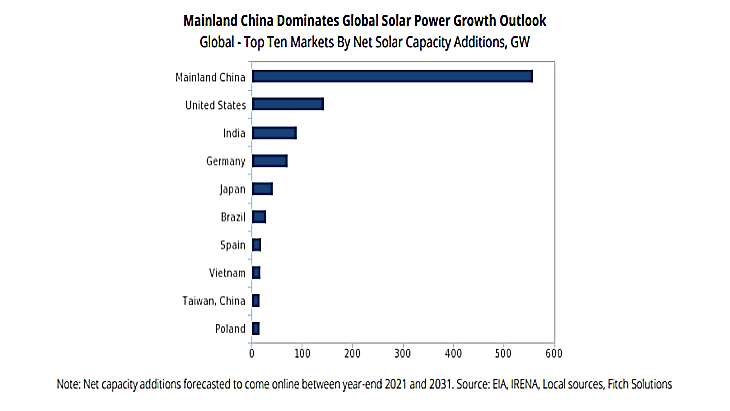
Fitch said Mainland China has taken steps to diversify its power mix as it shifts away from coal-fired power generation, and the solar sector plays a key role in this transition, with the country adding 53GW of solar capacity to its grid in 2021, making it the largest expanding solar market.
“With a steady growth forecast at an average of about 56GW annually between 2022 and 2031, the market will continue to outperform the global solar market,” it said.
It will account for nearly 47% of the world’s 1,190GW net solar capacity additions in the forecast period.
The Chinese government has made actions to ensure that its policies allow the integration of renewable energy into its power mix, which is important in the transition to a “subsidy-free renewables sector.”
Key plans include those that will reduce grid bottlenecks and formalise electricity transmission across regional boundaries within the market, Fitch said.
Another crucial factor is the deployment of ultra-high voltage transmission lines that connect areas with surplus electricity generation to provinces with higher power consumption, which is impossible before due to grid limitations, it said.
“This has enabled Mainland China to integrate more renewables into the grid, and improved power security to stabilise the grid in regions with greater reliance on intermittent renewable electricity,” Fitch said.
“We expect ongoing transmission infrastructure investment to improve power security and widen grid access to areas with greater solar power potential,” it added.